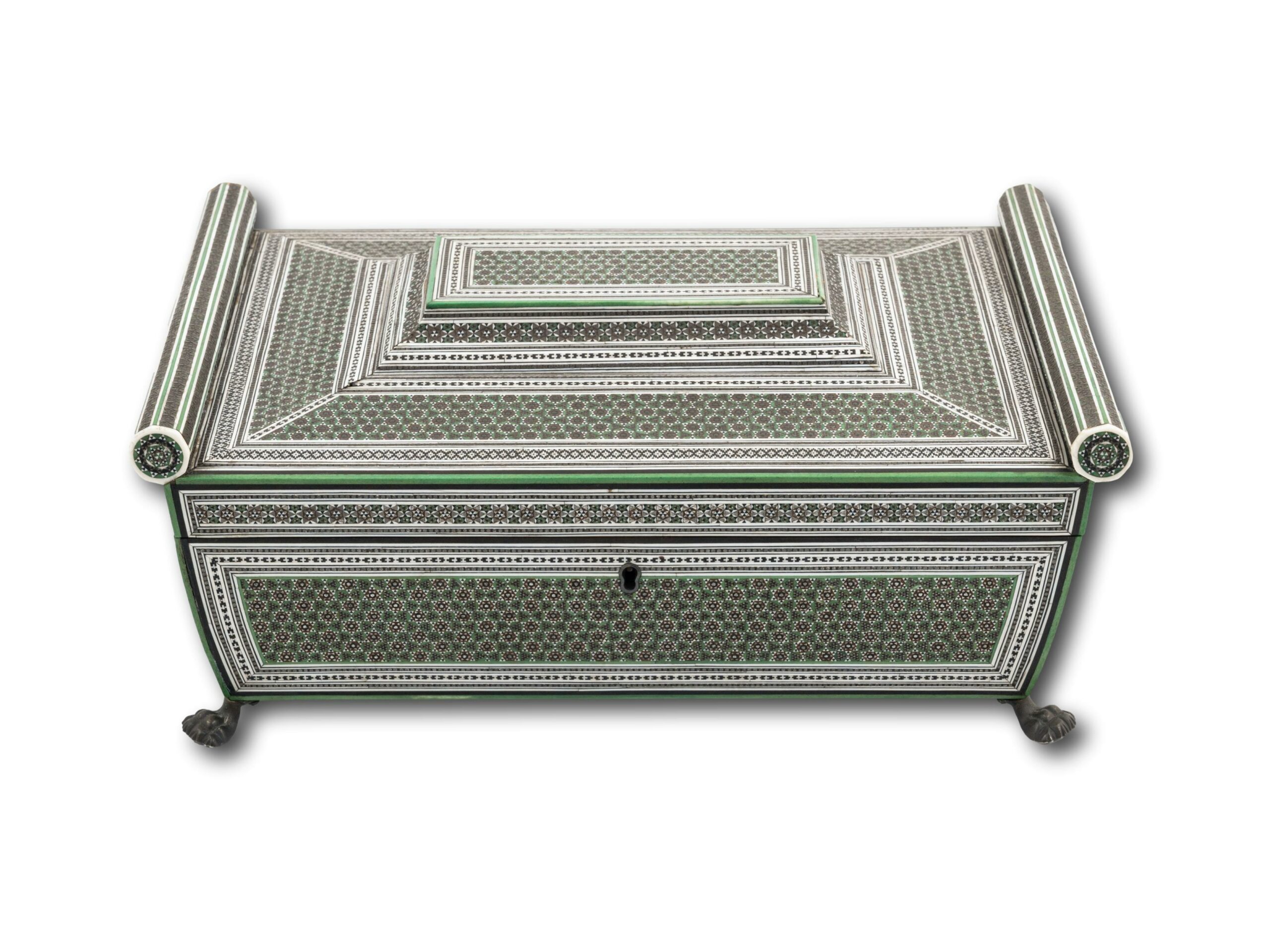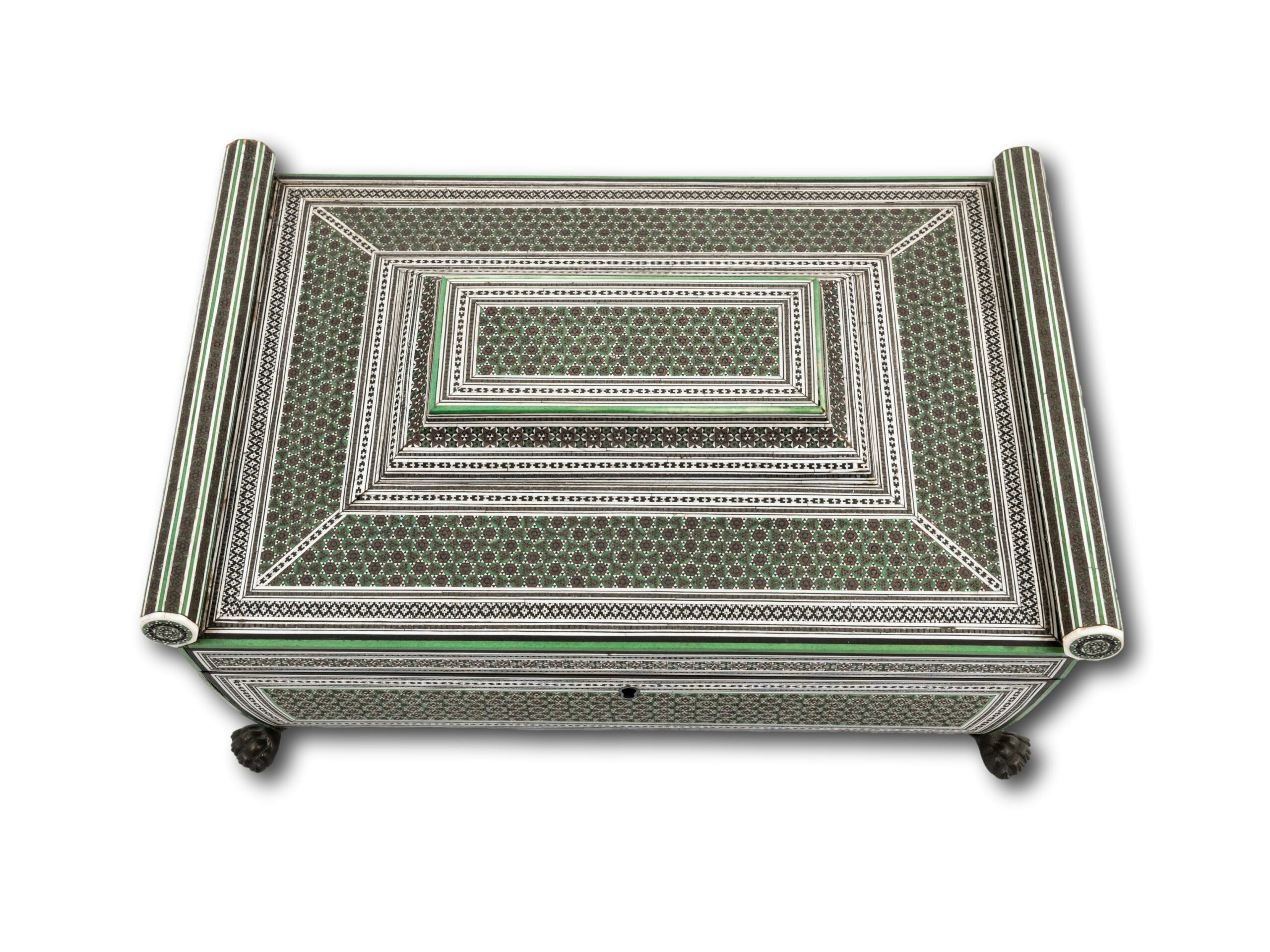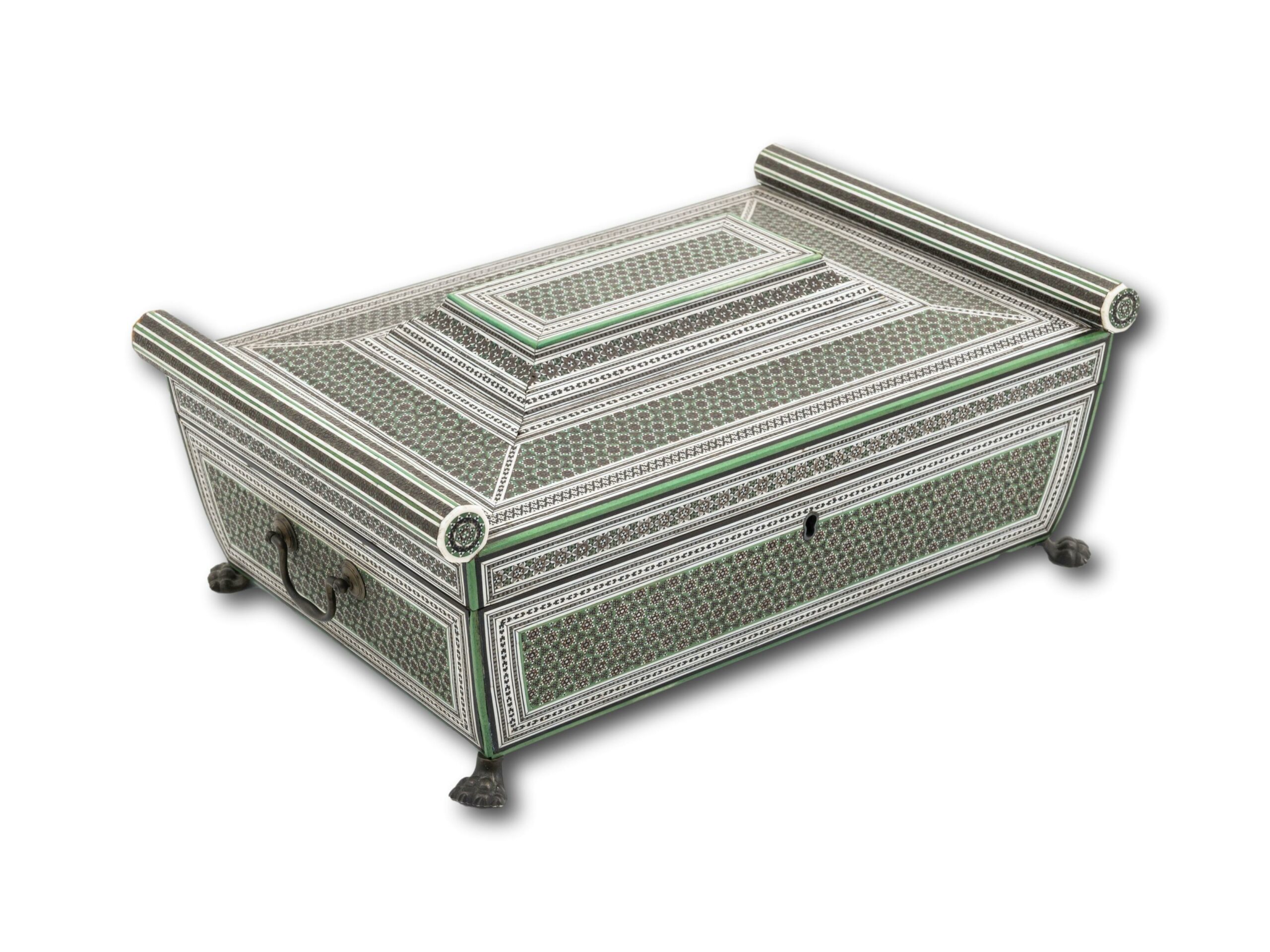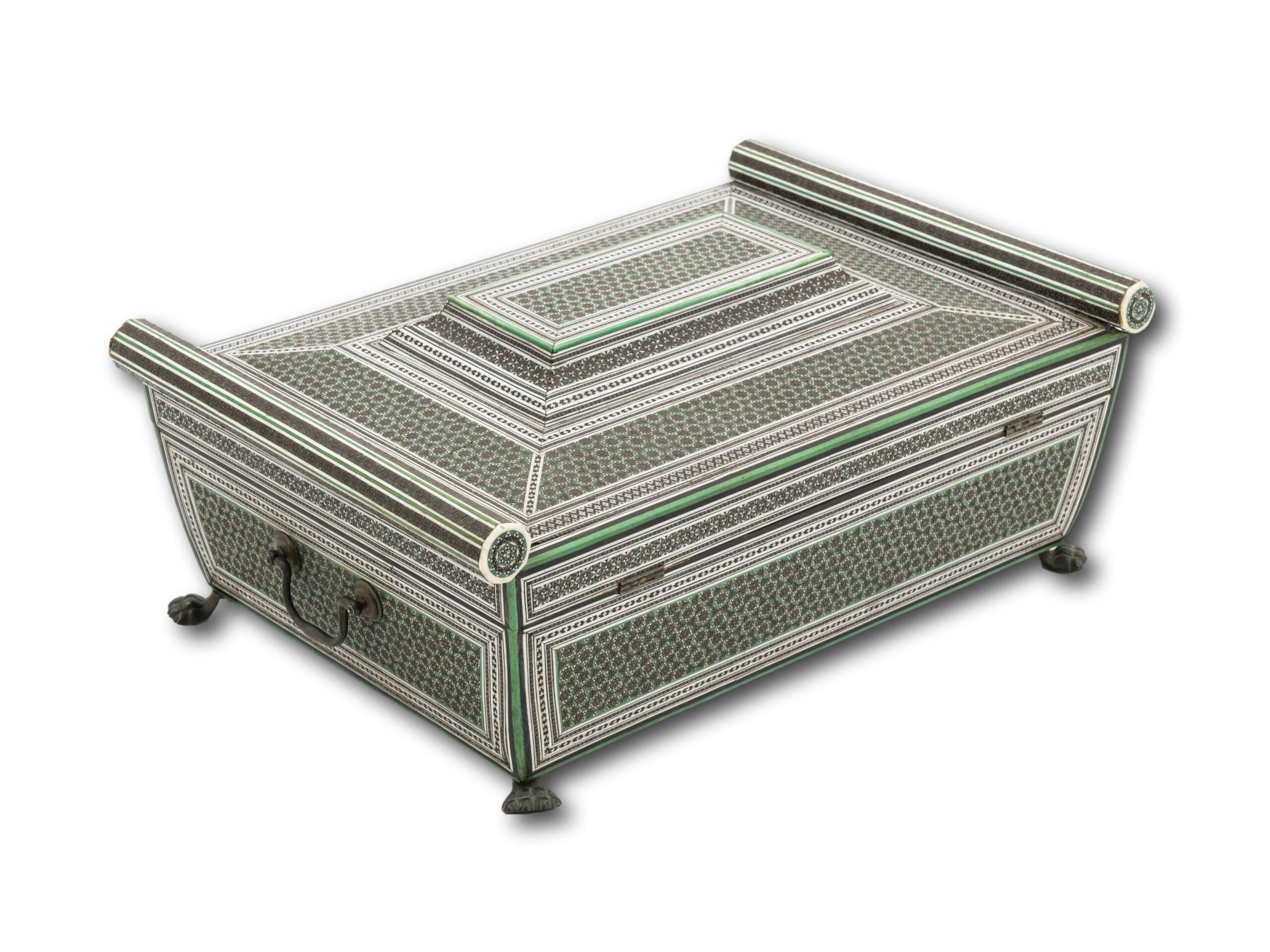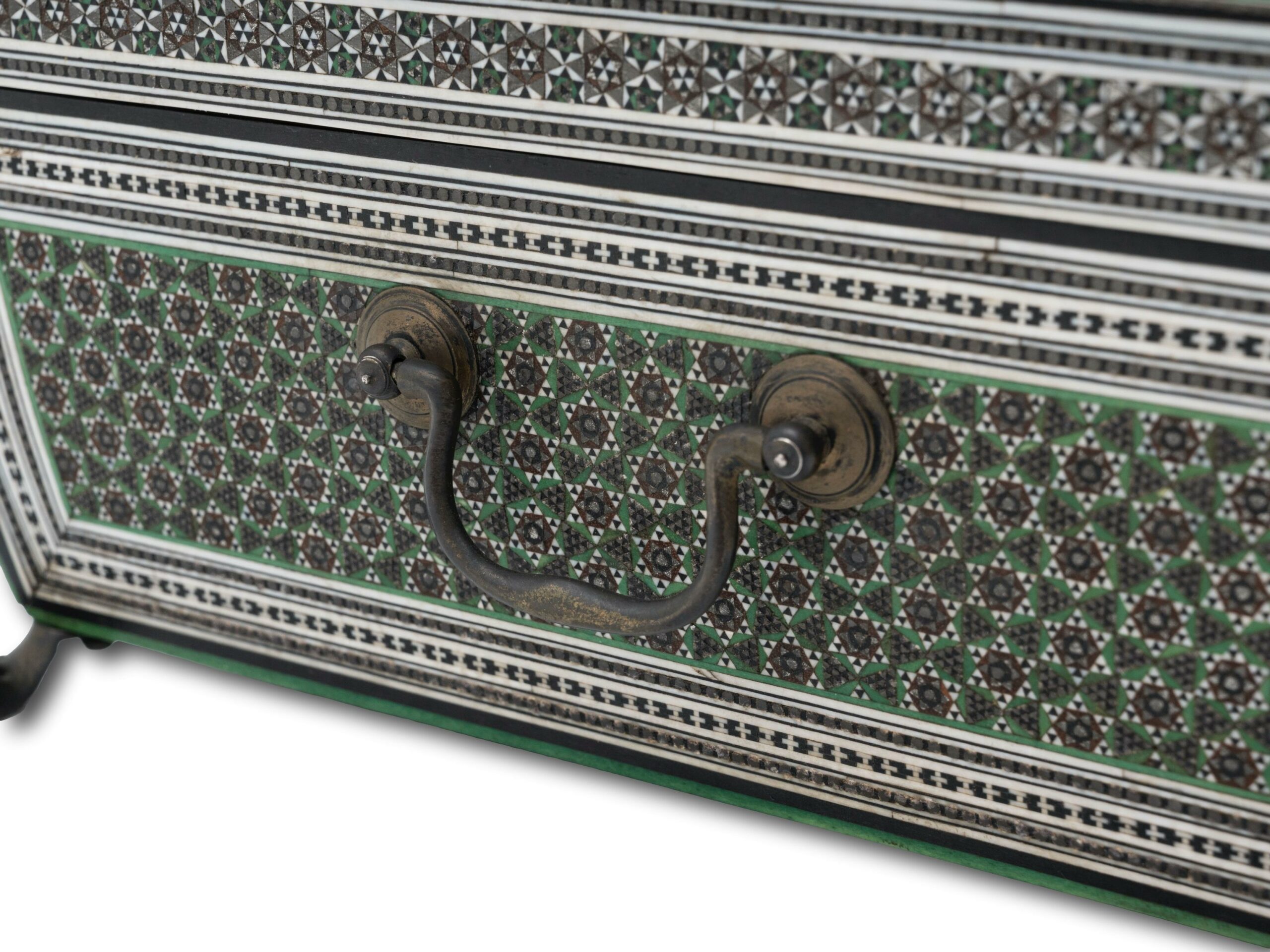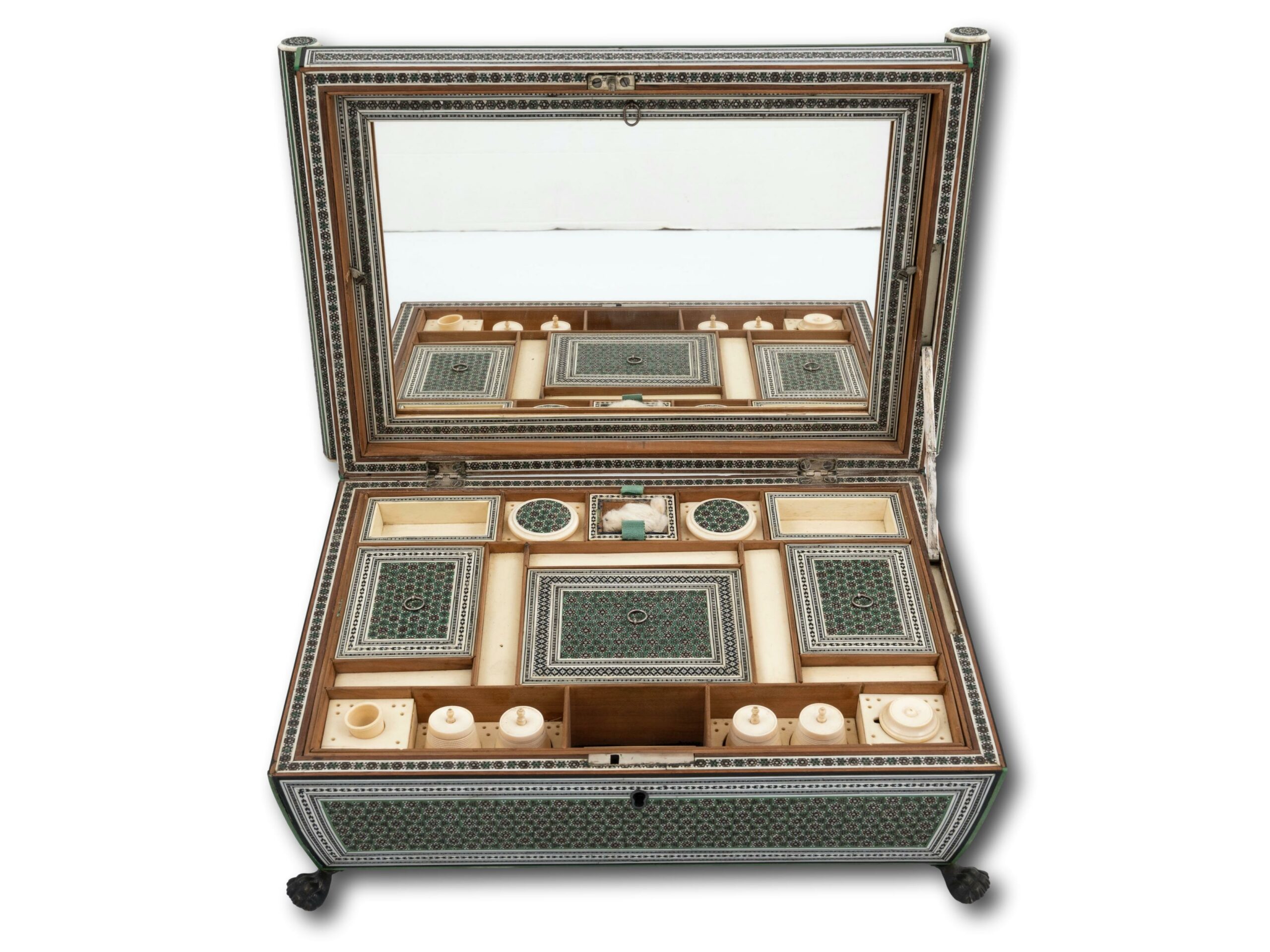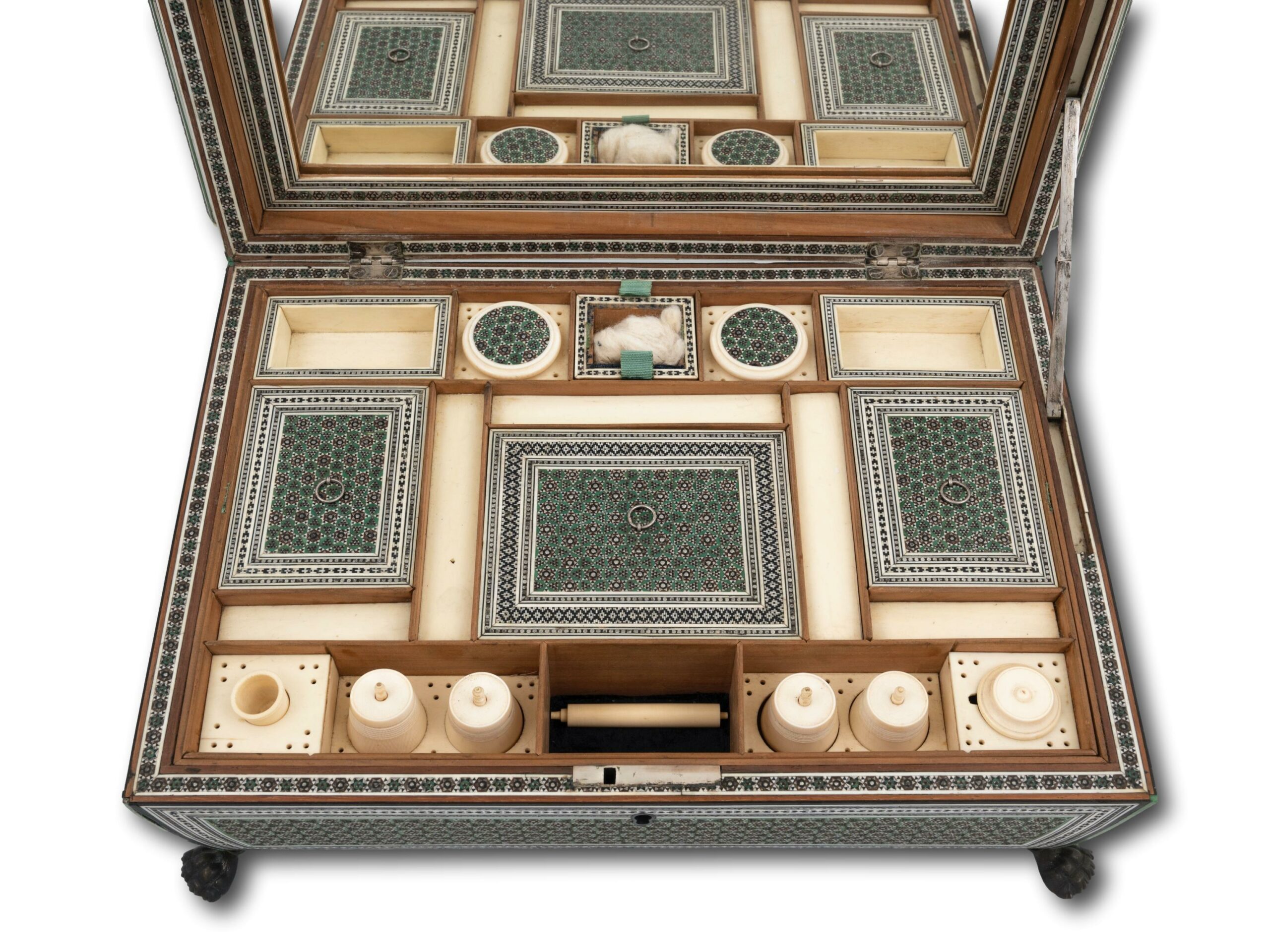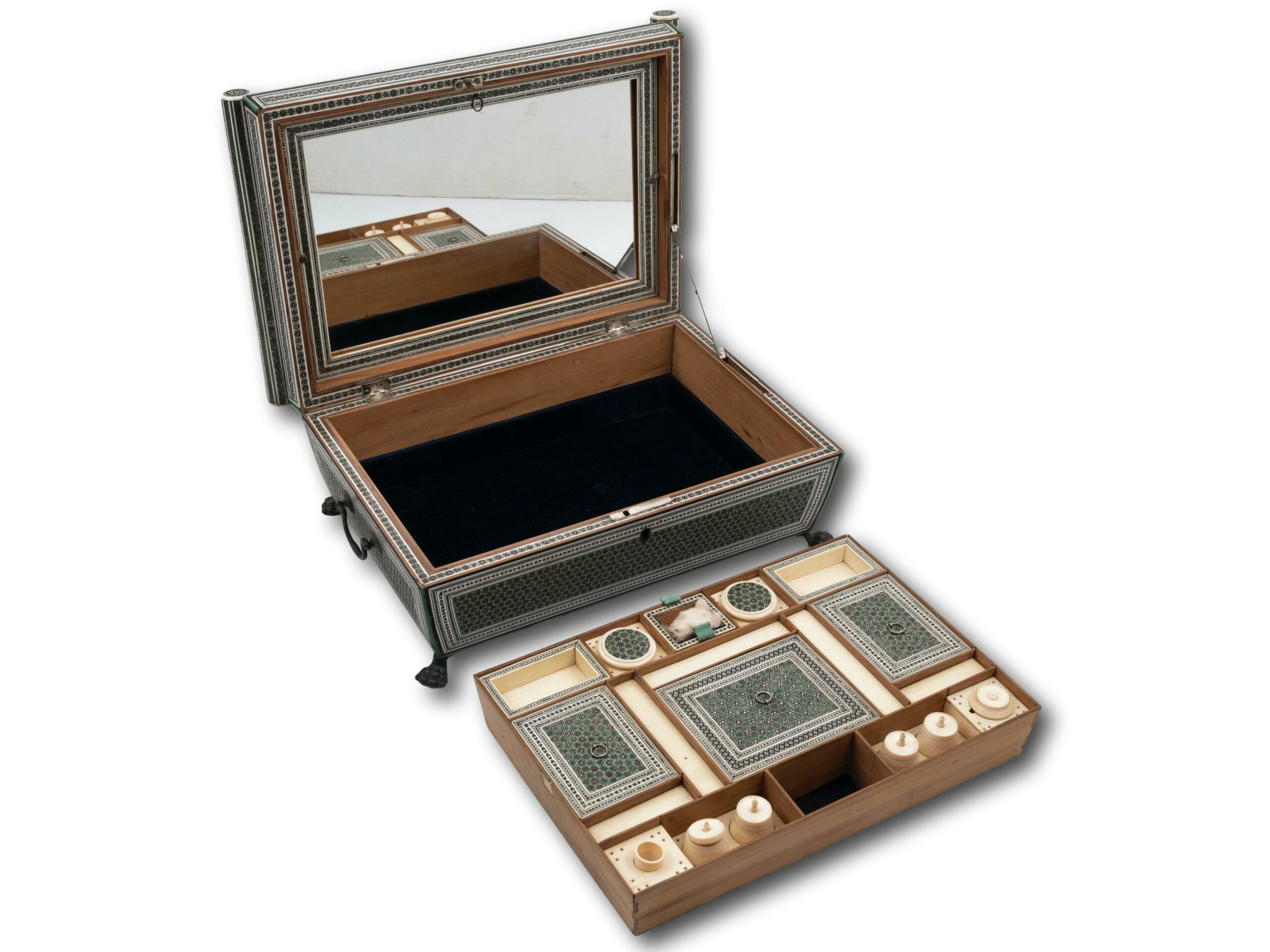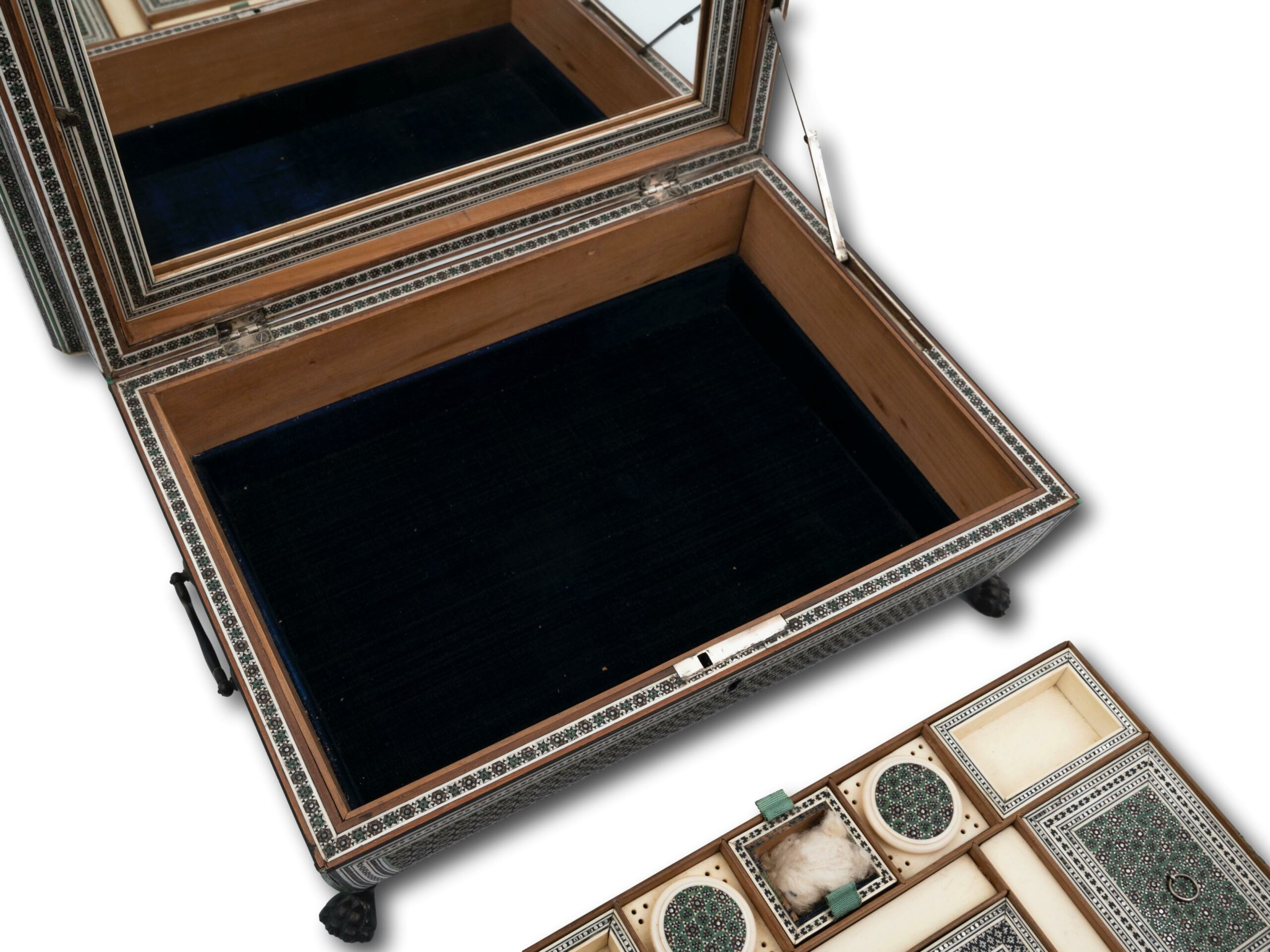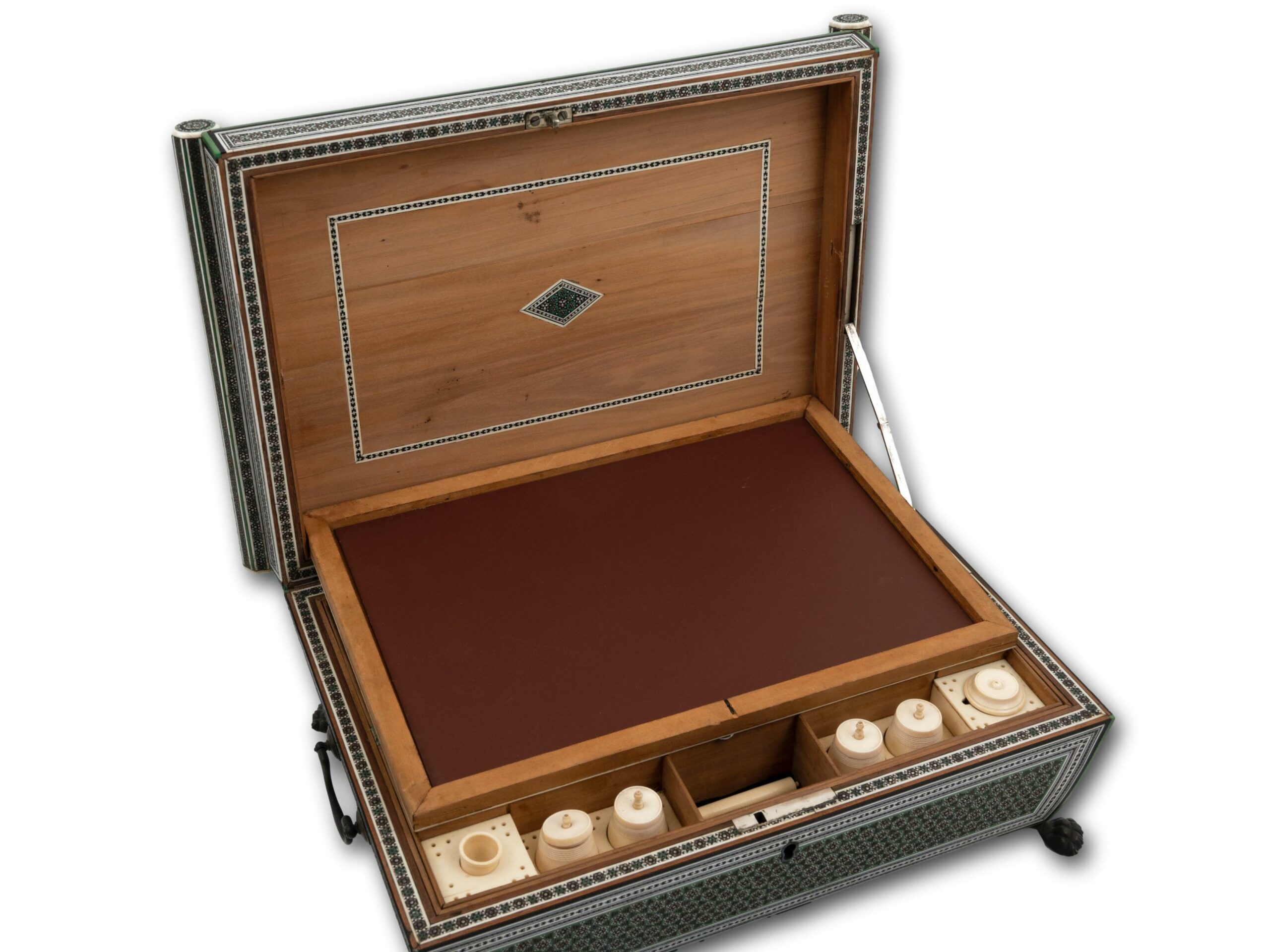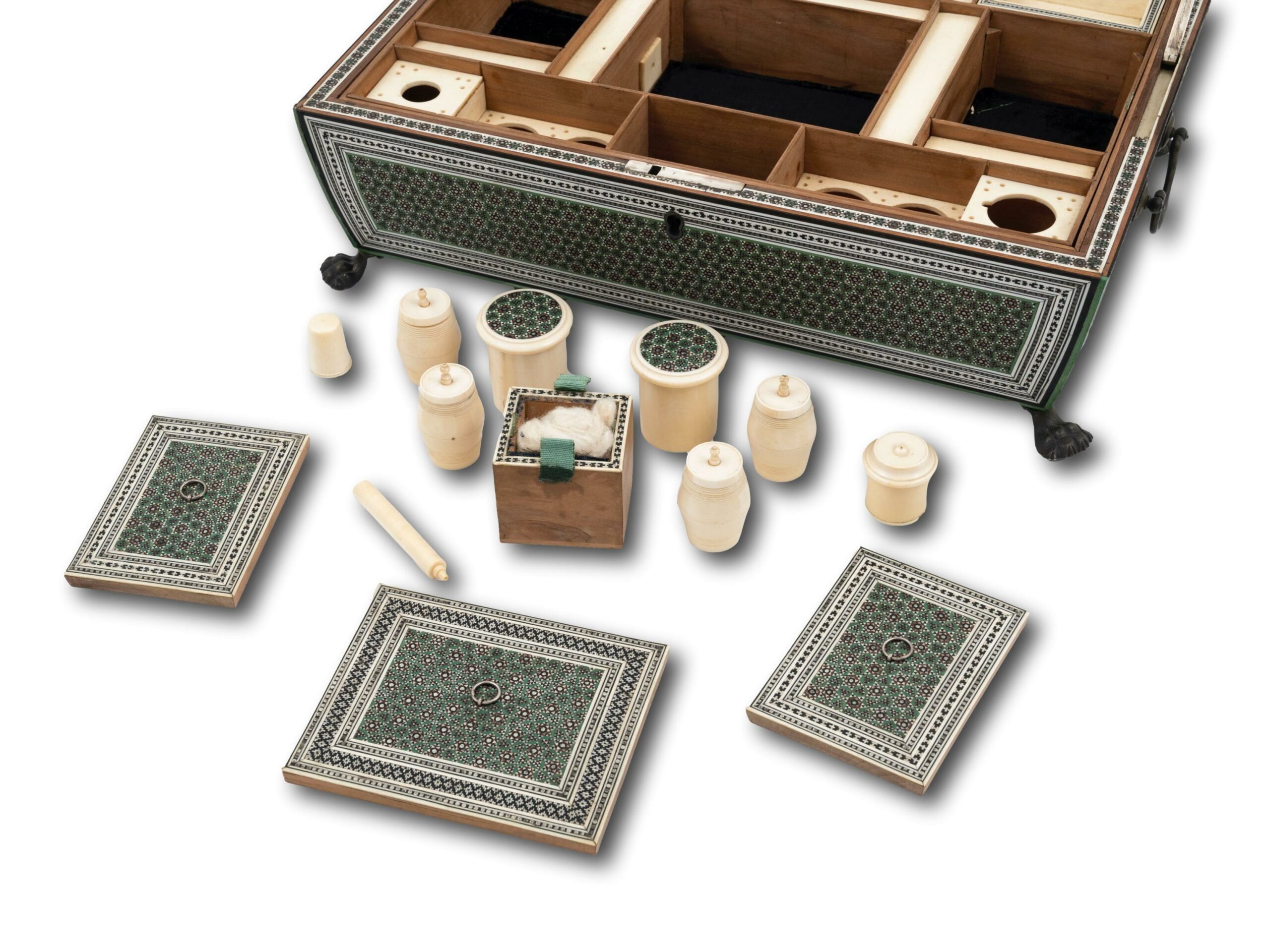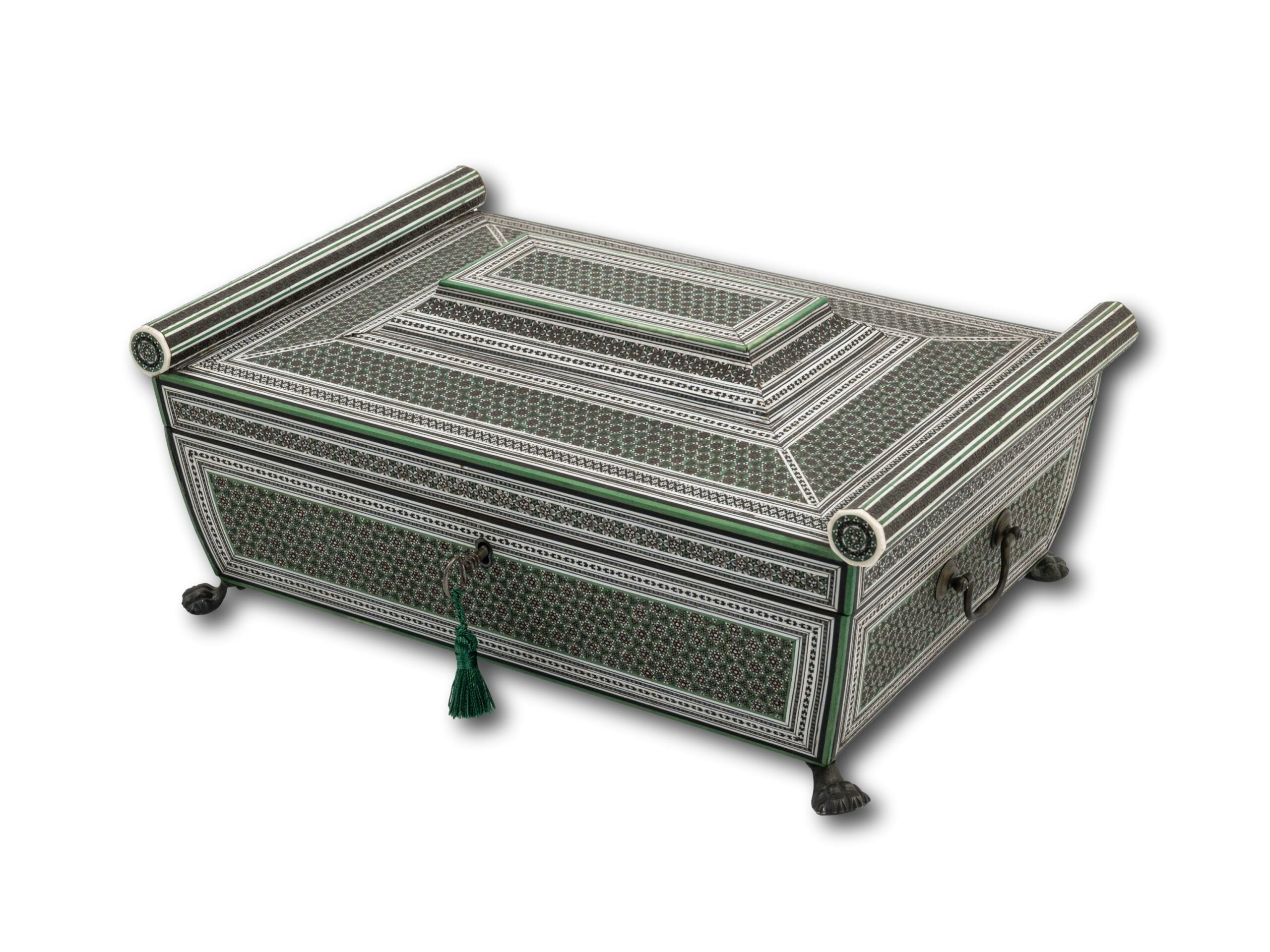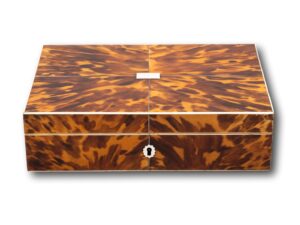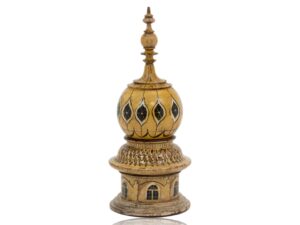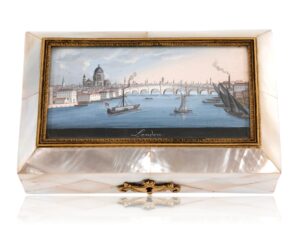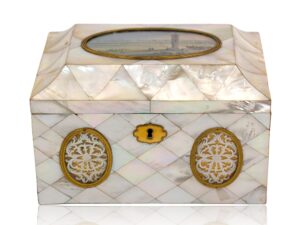Anglo-Indian Sadeli Sewing Box
SOLD
Fully Fitted Interior From our Sewing Boxes collection, we are delighted to offer this Anglo-Indian Sadeli Sewing Box. The Sewing Box of Sarcophagus form crafted in traditional Sadeli methods with thousands of individual inlaid mosaics pieces formed into geometric patterns. ... Read More
Early 19th Century Circa 1810
| Dimensions | 34.5 × 23.5 × 13 cm |
|---|---|
| Literature | See Furniture From British India and Ceylon Amin Jaffer Page 316 Image 128 Workbox |
| Medium | |
| Period | |
| Country | |
| CITES | TG8RTRHJ |
| SKU | 501139-TSXEE |
Description
Description
Fully Fitted Interior
From our Sewing Boxes collection, we are delighted to offer this Anglo-Indian Sadeli Sewing Box. The Sewing Box of Sarcophagus form crafted in traditional Sadeli methods with thousands of individual inlaid mosaics pieces formed into geometric patterns. The box is formed with two rolled cylinders on opposing edges flanking the central raised top. The Sewing Box is raised upon four white metal claw-raised feet lifting the box clear from the surface. Hinged at the rear, the lid opens to reveal multiple lidded compartments lined with sandalwood. The top tray in the Sewing box contains various sewing accompaniments and can be removed for use. The tray is hides a Royal blue velvet upholstered storage compartment for further sewing accessories and materials below. The removable mirror is housed in the inside of the lid and operates on a catch revealing further inlaid detail behind. The Sadeli Work Box dates to the first quarter of the 19th century circa 1810. For a very similar work box see Furniture From British India and Ceylon Amin Jaffer Page 316 Image 128 Workbox
The Anglo-Indian sewing box comes complete with a fully working lock and key.
Sadeli (सदेली) is the Hindi name of a type of marquetry that is primarily associated with the town of Surat on the coast of Gujarat and the Bombay Presidency) is a type of micro mosaic inlay using faceted strips of diverse materials. The complete piece often features various colours showing the striking composition, in this exceptional example you will find colours of bright green and white. Sadeli is done by joining long strips of different materials and cross-sections into long rods, that are then cut into slices, each slice showing the rod’s cross-section. Materials used were often horn, bone, ivory, ebony, and various metals. The technique originally came from Persia where it is called khātam, and it is believed to have been first introduced into Surat through Sindh. Indian craftsmen developed their own distinct forms from there. By 1903, the chief centers of its production also included Ahmedabad, Baroda and Bombay.
Vizagapatam is often mistaken for Sadeli however Vizagapatam is actually used to describe pieces made by Indian craftsmen around the town of the same name on the Coromandel Coast of India (modern-day Visakhapatnam in Andhra Pradesh) throughout the 18th century and up to the mid 19th century. Typically it displays grey/ black decoration on a creamy white ivory base.
Sandalwood belongs to the genus Santalum group of trees. The woods are heavy, yellow, and fine-grained. Unlike many other aromatic woods they retain their fragrance for decades. Sandalwood is often cited as one of the most expensive woods in the world and is sought after for its easy ability to carving.
Every purchase made from Mark Goodger Antiques is accompanied by a comprehensive suite of documents to ensure your satisfaction and peace of mind. This includes our latest catalogue, a Certificate of Authenticity, detailed care instructions for your chosen item, and an independent invoice for insurance purposes. Additionally, your purchase is protected by our no-hassle, money-back policy, and your item will be fully insured during the shipping process to safeguard against damage or loss.
Additional information
Additional information
| Dimensions | 34.5 × 23.5 × 13 cm |
|---|---|
| Literature | See Furniture From British India and Ceylon Amin Jaffer Page 316 Image 128 Workbox |
| Medium | |
| Period | |
| Country | |
| CITES | TG8RTRHJ |
| SKU | 501139-TSXEE |

